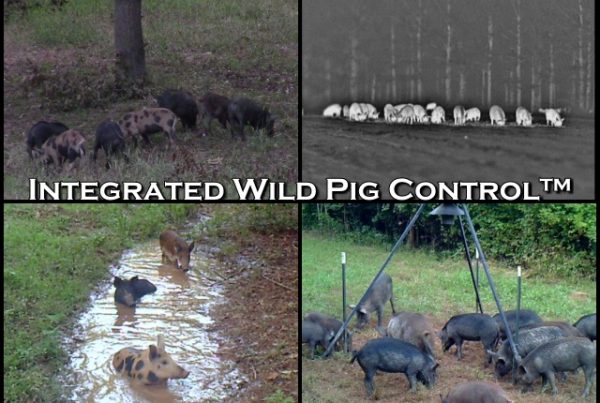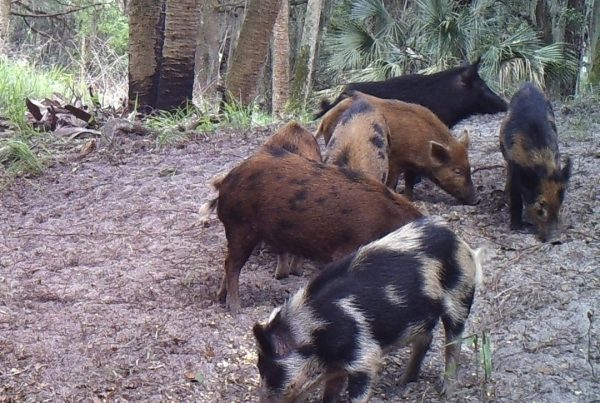Best Management Practices (BMPs) for every species is based on scientific research (not compassion or animal rights) to protect the public health from diseases, bacteria, viruses and parasites. Science and academic research determines how a species is labeled such as nuisance pest, game animal, non-game animal or wildlife. This research also determines the Best Management Practices needed to either manage the pest/animal damage or actually control the pest/animal population. Professionals earn their living implementing the most efficient Best Management Practices for each individual species. For example, bird control experts minimize airplane bird strikes by modifying the birds’ habitat and controlling the birds’ behavior because these methods have proven to be the Best Management Practices for birds. Hog control experts implement lethal control measures because these methods have proven to be the Best Management Practices for feral swine. There is no difference between JAGER PRO® killing thousands of feral swine annually and a pest control company killing thousands of termites, rats or cockroaches each year. It is agricultural pest control of a non-native, invasive species.
Non-Lethal Control
Aversive Devices and Physical Controls
 Using distress sounds or propane cannons to scare feral swine away are considered aversive devices and is (at best) a short-term solution. Pigs quickly become desensitized to the audio if no physical danger occurs. Creating a barrier (fence) to prevent crop destruction is considered a physical control. There has never been an academic study from any country to support aversion or fencing as an economical method to eliminate long-term agricultural crop depredation. Fencing is a logistically and financially flawed theory and does not address reproduction of the pest outside the fence. A single American farming entity may plant and harvest 2,000-3,000 acres spread across multiple counties. One square mile is 640 acres which would require 4 miles of woven wire fence costing $31,792. According to Iowa State University, it would take 672 hours of labor to build such a fence to protect a single square mile section of crops. The total fencing cost for 100,000 acres would be approximately $5 million requiring 105,000 hours of labor.
Using distress sounds or propane cannons to scare feral swine away are considered aversive devices and is (at best) a short-term solution. Pigs quickly become desensitized to the audio if no physical danger occurs. Creating a barrier (fence) to prevent crop destruction is considered a physical control. There has never been an academic study from any country to support aversion or fencing as an economical method to eliminate long-term agricultural crop depredation. Fencing is a logistically and financially flawed theory and does not address reproduction of the pest outside the fence. A single American farming entity may plant and harvest 2,000-3,000 acres spread across multiple counties. One square mile is 640 acres which would require 4 miles of woven wire fence costing $31,792. According to Iowa State University, it would take 672 hours of labor to build such a fence to protect a single square mile section of crops. The total fencing cost for 100,000 acres would be approximately $5 million requiring 105,000 hours of labor.
Biological Controls

Will government agencies reimburse farmers and ranchers when introduced wolves and mountain lions kill their livestock? Government does not have a very good track record of managing any project effectively. Minnesota’s wolf depredation fund costs their state taxpayer’s additional money each year. Also, animal rights activists and environmentalists cannot be trusted to allow wolf or mountain lion populations to be properly controlled (hunted and trapped) when native wildlife species are over-predated. This predator theory is very misguided as the largest wild hog populations are located in southern states where a healthy bear, coyote, bobcat and fox population already exist. Wild pork rarely exceeds 5% of predator stomach content research according to published academic research.
Chemical Reproductive Control


The logical basis for feral swine control is exactly the same. Contraception does not solve crop depredation. Castrated males or infertile females eat the same number of crops and cause the same amount of crop damage as reproductive adults. Bait contraception (if successfully developed) would only help slow reproduction while whole-sounder lethal control methods are administered. State law enforcement campaigns must also be implemented to arrest and punish those illegally transporting and releasing feral swine.
Lethal Control

American Veterinary Medical Association Guidelines for the Euthanasia of Animals – Page 36 – M3.5 GUNSHOT – “A properly placed gunshot to the brain can cause immediate insensibility and a humane death. Under some conditions, a gunshot may be the only practical method of euthanasia.”
Hog Control Operators™ make daily decisions based on effective processes and efficient products. The cost of our M.I.N.E.® Trapping System is only $3,500 which is less than the cost of one semi-automatic rifle topped with a Gen 3-night vision scope or a 336×256 resolution thermal scope. Our trapping process is more efficient (25 pigs, 2 personnel, 4 hours of labor) and our product is less expensive than a rifle with night optics. Also, the number of personnel, rifles, thermal optics, ammunition, fuel, vehicles and man hours required to shoot 25 pigs (multiple events) is far more expensive than trapping them (one event).





